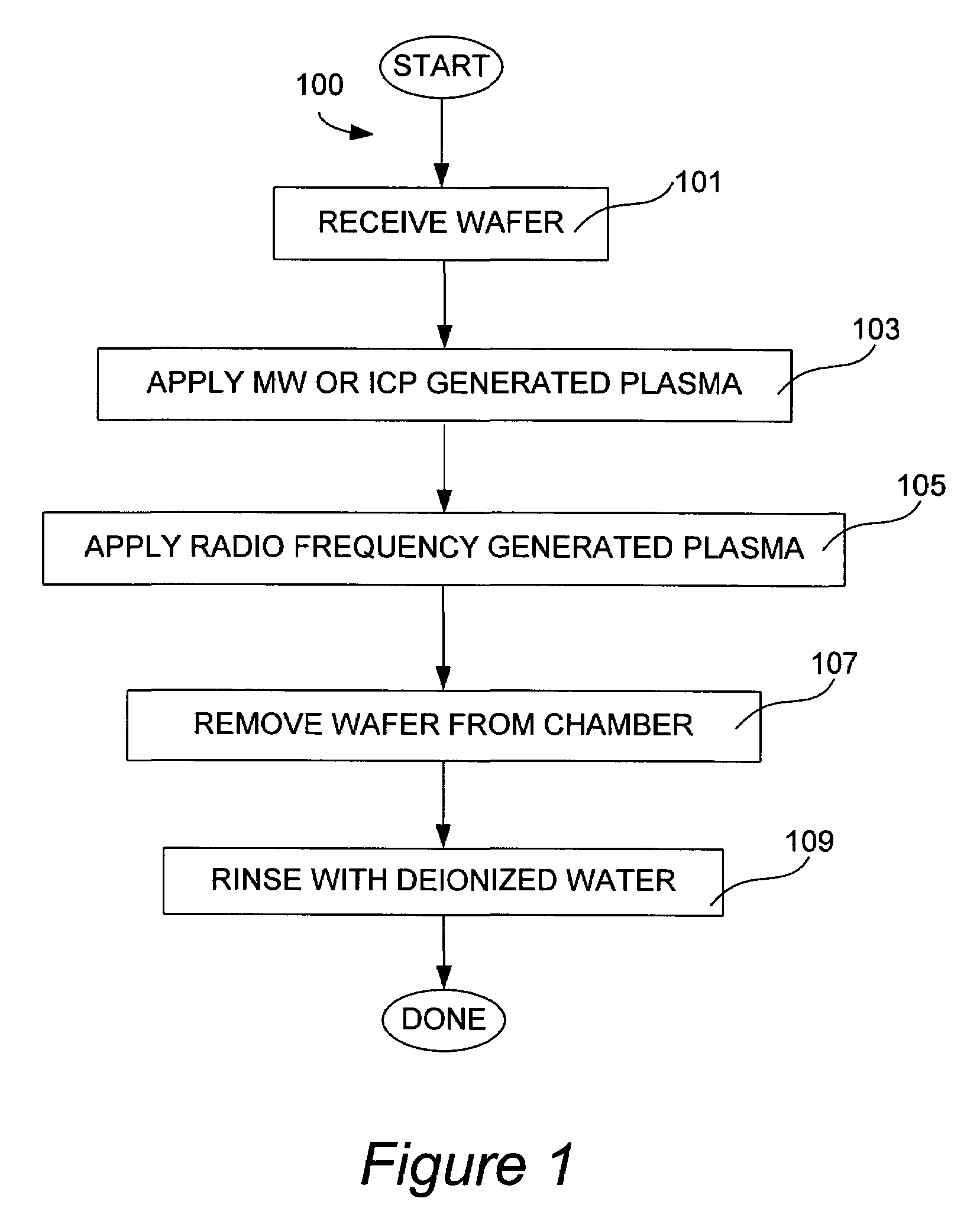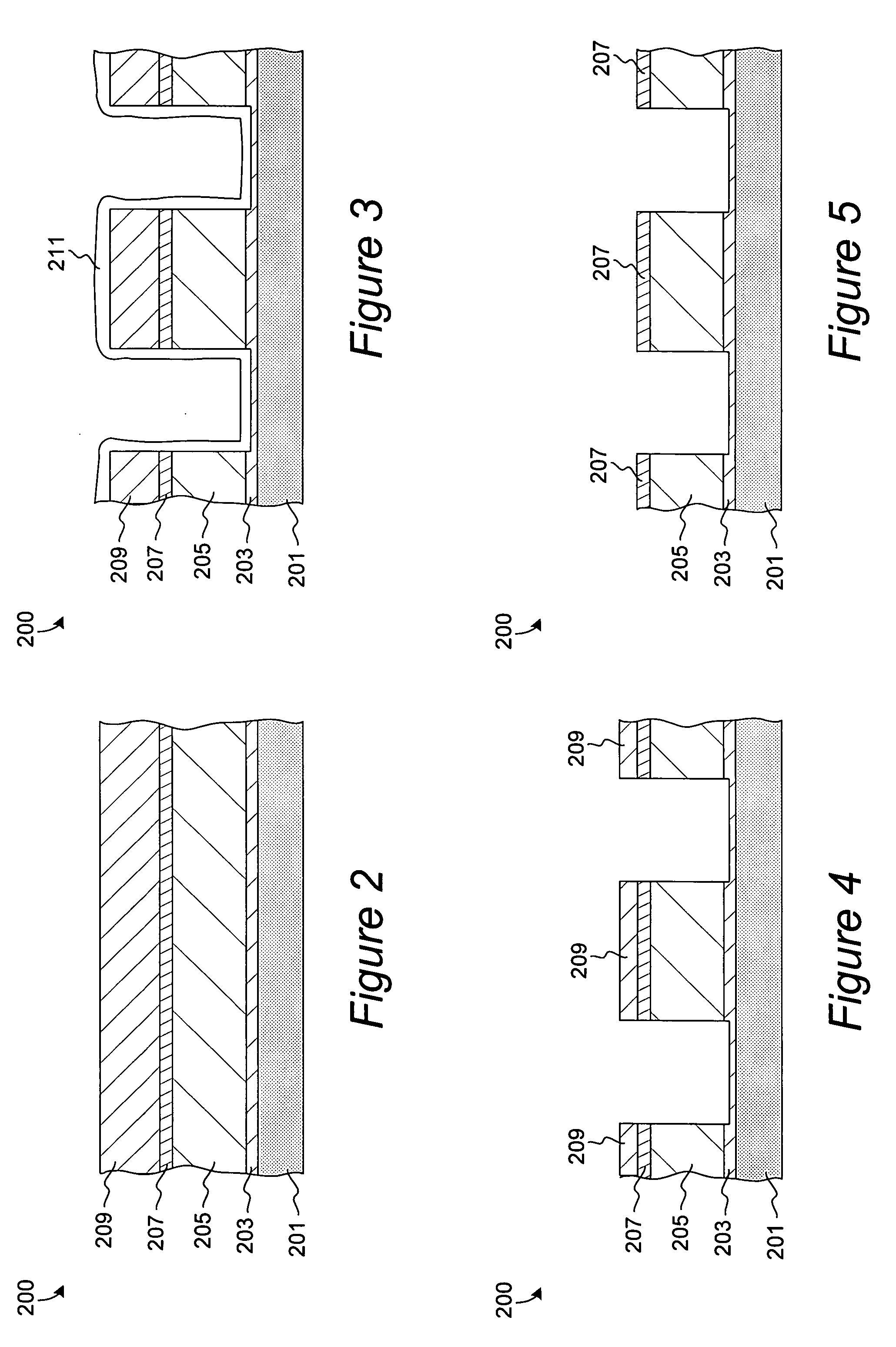Methods for post polysilicon etch photoresist and polymer removal with minimal gate oxide loss
a polysilicon and photoresist technology, applied in the direction of liquid cleaning, electric discharge tube, chemistry apparatus and processes, etc., can solve the problems of ineffective removal of undesirable polymer residues by other corrosive solvents, requiring extensive abatement and environmental control, and nonfunctional circuits, etc., to achieve rapid polymer removal, reduce the effect of etching rate and high selectivity
- Summary
- Abstract
- Description
- Claims
- Application Information
AI Technical Summary
Benefits of technology
Problems solved by technology
Method used
Image
Examples
Embodiment Construction
[0022]In the following detailed description of the present invention, numerous specific embodiments are set forth in order to provide a thorough understanding of the invention. However, as will be apparent to those skilled in the art, the present invention may be practiced without these specific details or by using alternate elements or processes. For example, specific methods described below reference removal of photoresist, etchant residues, and various polymeric materials left on a wafer after etching device features on a wafer using photoresist / lithography / etch techniques. However, the invention is not limited to cleaning these specific materials from a wafer. Additionally, the gas mixtures used to generate plasmas as described herein are provided for exemplary description of the invention. In some instances well-known processes, procedures, and components have not been described in detail so as not to unnecessarily obscure aspects of the present invention.
[0023]The following de...
PUM
| Property | Measurement | Unit |
|---|---|---|
| Temperature | aaaaa | aaaaa |
| Temperature | aaaaa | aaaaa |
| Temperature | aaaaa | aaaaa |
Abstract
Description
Claims
Application Information
 Login to View More
Login to View More - R&D
- Intellectual Property
- Life Sciences
- Materials
- Tech Scout
- Unparalleled Data Quality
- Higher Quality Content
- 60% Fewer Hallucinations
Browse by: Latest US Patents, China's latest patents, Technical Efficacy Thesaurus, Application Domain, Technology Topic, Popular Technical Reports.
© 2025 PatSnap. All rights reserved.Legal|Privacy policy|Modern Slavery Act Transparency Statement|Sitemap|About US| Contact US: help@patsnap.com



